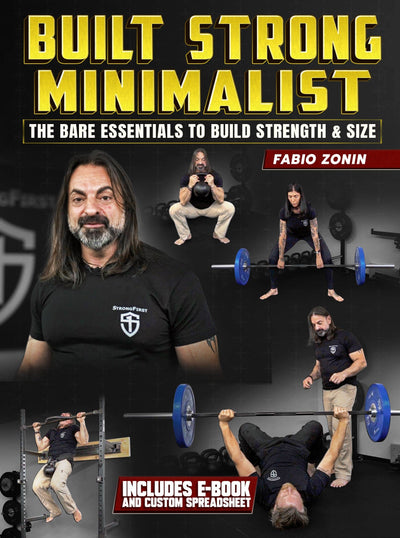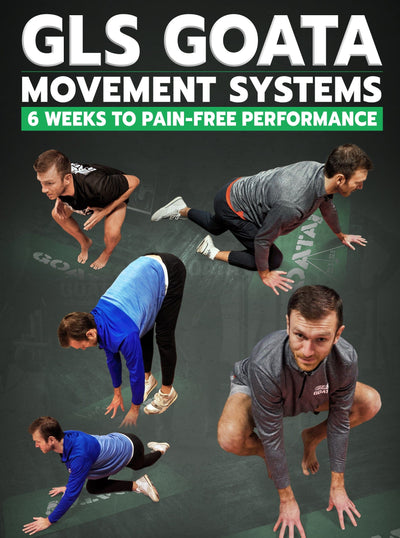Unlocking Shoulder Mastery with the Kettlebell Halo
The kettlebell halo is a versatile exercise renowned for its ability to engage the shoulders, promote flexibility, and enhance core stability. This dynamic movement involves a circular motion with a kettlebell, creating a halo-like path around the head. Below, we delve into the specific muscles targeted, a step-by-step guide on how to perform the exercise, the numerous benefits it offers, and additional insights to optimize your training.
What this article covers:
- Muscles Worked during Kettlebell Halo
- How to Perform the Kettlebell Halo
- Benefits of the Kettlebell Halo
- Common Mistakes and How to Avoid Them
- Variations and Progressions
- Complementary Exercise: Kettlebell Shoulder Press
- Complementary Exercise: Kettlebell Swings
- Conclusion: Mastering the Kettlebell Halo
Muscles Worked during Kettlebell Halo
Understanding the muscles activated during the kettlebell halo provides insight into its comprehensive benefits:
Shoulders (Deltoids):
The three heads of the deltoids are dynamically engaged as they work to control the kettlebell's circular path. This engagement promotes balanced shoulder development.
Traps (Trapezius Muscles):
The upper traps, in particular, play a crucial role in stabilizing the shoulders during the halo. This contributes to improved upper back strength and posture.
Core Muscles:
The rotational nature of the halo activates the core muscles, including the obliques and transverse abdominis. This engagement enhances core stability and control throughout the exercise.
How to Perform the Kettlebell Halo
Executing the kettlebell halo with precision is key to reaping its full benefits. Follow these detailed steps for proper form:
Starting Position:
Stand with your feet shoulder-width apart for a stable base.
Hold the kettlebell by the handle with both hands, positioning it close to your chest.
Executing the Movement:
Begin the circular motion by moving the kettlebell to the right, around the head.
As the kettlebell passes behind the head, guide it with both hands to the left side.
Complete the circle by returning to the starting position.
Repeat the movement in both clockwise and counterclockwise directions.
Form Tips:
Maintain a firm grip on the kettlebell throughout the exercise.
Keep your spine neutral to avoid arching or rounding the back.
Actively engage the core muscles to stabilize the torso.
Execute the movement in a controlled, deliberate manner, avoiding any rapid or jerky motions.
Benefits of the Kettlebell Halo
Understanding the extensive benefits of the kettlebell halo reinforces its value in a well-rounded fitness routine:
Shoulder Mobility and Flexibility:
The circular motion challenges the shoulders through a complete range of motion, fostering increased flexibility and reducing stiffness.
Core Stability:
The rotational aspect engages the core, promoting stability and strength. This contributes to enhanced overall core strength and injury prevention.
Scapular Control:
The halo encourages scapular retraction and protraction, promoting better control and awareness of the shoulder blades. This, in turn, contributes to improved posture.
Versatility in Training:
The kettlebell halo is a versatile exercise that can serve various purposes, from an effective warm-up routine to an accessory exercise complementing traditional shoulder workouts.
Common Mistakes and How to Avoid Them
Identifying and addressing common mistakes is essential for optimizing the effectiveness of the kettlebell halo:
Rushing the Movement:
Correction: Perform the halo deliberately and at a controlled pace, emphasizing the entire range of motion for each repetition.
Neglecting Core Engagement:
Correction: Actively contract the core muscles throughout the movement to stabilize the torso and prevent unnecessary swaying.
Variations and Progressions
The kettlebell halo, while effective on its own, can be customized to suit different fitness levels and goals. Exploring variations and complementary exercises not only adds diversity to your routine but also challenges your body in new ways.
Weight Variation:
Adjusting the weight of the kettlebell is a straightforward way to modify the intensity of the halo. Start with a lighter weight to focus on form and gradually progress to heavier kettlebells for increased resistance.
Complementary Exercise: Kettlebell Shoulder Press
Enhance your shoulder strength by incorporating the kettlebell shoulder press. This exercise complements the halo by targeting the deltoids and trapezius muscles in a more vertical motion.
Single-Arm Halo:
Performing the halo with one arm at a time introduces an additional stability challenge. This variation demands increased engagement from the core and shoulder muscles, promoting unilateral strength development.
Complementary Exercise: Single-Arm Kettlebell Press
Combine the single-arm halo with the single-arm kettlebell press to create a seamless sequence. This tandem engages the entire shoulder complex while also challenging stability and coordination.
Directional Changes:
Experimenting with changes in the direction of the halo adds complexity to the exercise. Alternate between clockwise and counterclockwise rotations to ensure balanced development of the shoulder muscles.
Complementary Exercise: Kettlebell Swings
Integrate kettlebell swings into your routine to further enhance dynamic shoulder engagement. This explosive movement engages the posterior chain, including the shoulders, in a different plane of motion.
Tempo Variations:
Adjusting the tempo of the kettlebell halo can alter the muscle recruitment and intensity. Performing slower, controlled halos emphasizes time under tension, while quicker tempos can elevate the cardiovascular aspect of the exercise.
Complementary Exercise: Kettlebell Snatch
Incorporate kettlebell snatches to capitalize on the benefits of explosive movements. This complements the controlled tempo of the halo, providing a balance between strength and power development.
Incorporate Isometric Holds:
Introduce pauses or isometric holds at different points in the halo motion. This challenges muscle endurance and stability, promoting greater muscle engagement.
Complementary Exercise: Plank with Kettlebell Taps
Combine the isometric aspect of the halo with a plank position. Tap the kettlebell to the ground on alternating sides, engaging the shoulders and core for a comprehensive stability workout.
Complex Movements:
Integrate the kettlebell halo into complex movement patterns. Combining it with lunges, squats, or step-ups adds a functional dimension to your training.
Complementary Exercise: Kettlebell Goblet Squat
Pair the kettlebell halo with goblet squats to create a full-body movement sequence. This combination engages the shoulders, core, and lower body for a comprehensive workout.
Conclusion: Mastering the Kettlebell Halo
Incorporating the kettlebell halo into your fitness routine provides a multifaceted approach to shoulder training. By grasping its benefits, executing proper form, and exploring variations, you can harness the full potential of this exercise. Whether you're aiming to enhance shoulder mobility, improve core stability, or simply diversify your workout, the kettlebell halo stands as a valuable addition to your fitness arsenal.
Did you find the blog helpful? If so, consider checking out other guides:
- Mastering the Art of Kettlebell Chest Workouts
- Unlocking Shoulder Strength
- Unlocking Pectoral Power with the Kettlebell Fly
- The Russian Kettlebell Swing
- The American Kettlebell Swing
- The World of Russian Kettlebell Workouts
- Mastering the Russian Kettlebell Challenge
- The Double Kettlebell Russian Swing and Its Variations
- The Russian Kettlebell Swing in CrossFit Community and Competition
- Full-Body Kettlebell Workouts
- The Power of Kettlebell Benefits
- Exploring the Essence of Kettlebells
- Dumbbell-Kettlebell Fusion
- Why Kettlebells?
- How Many Kettlebells Do I Need?





